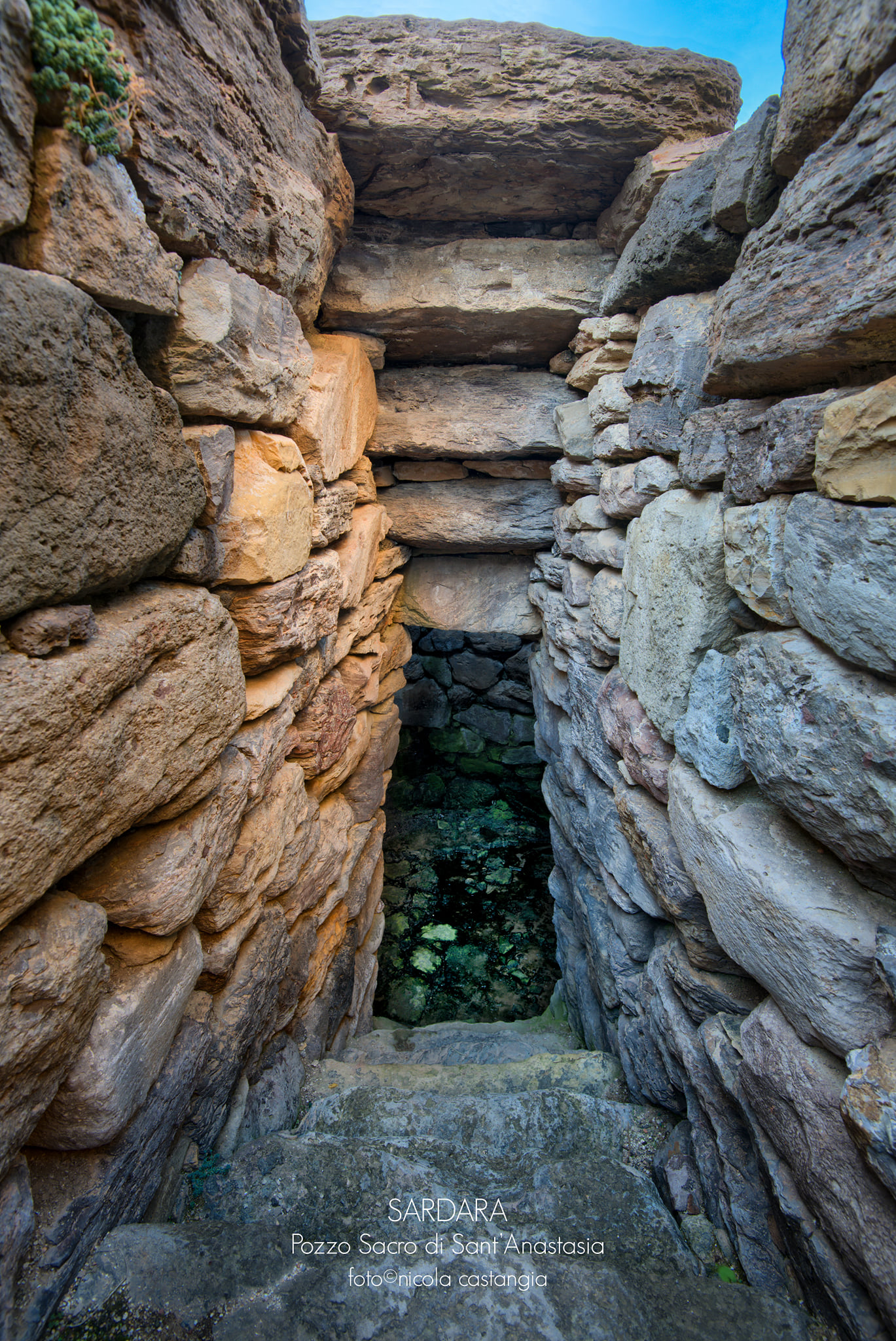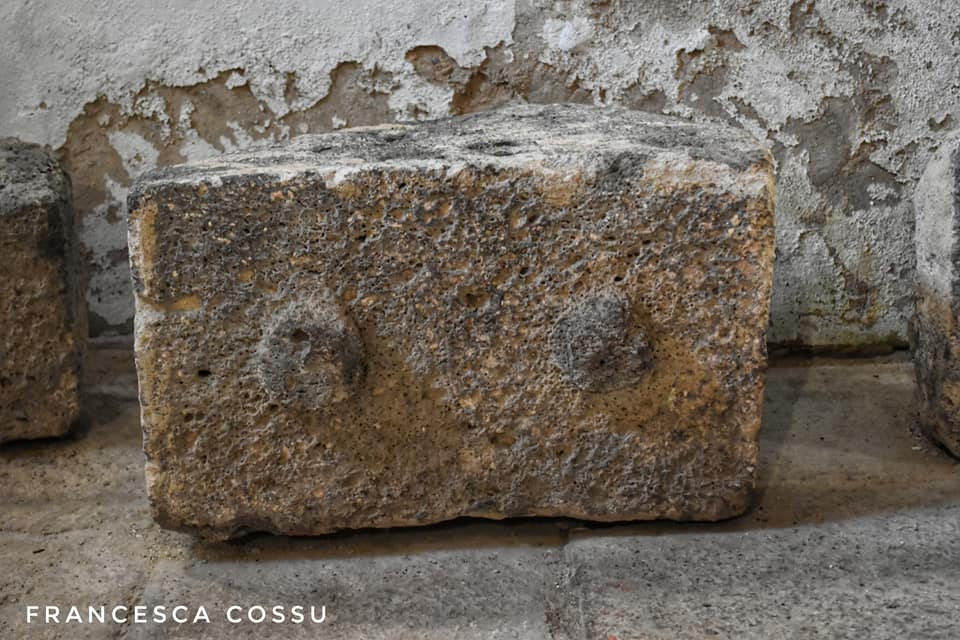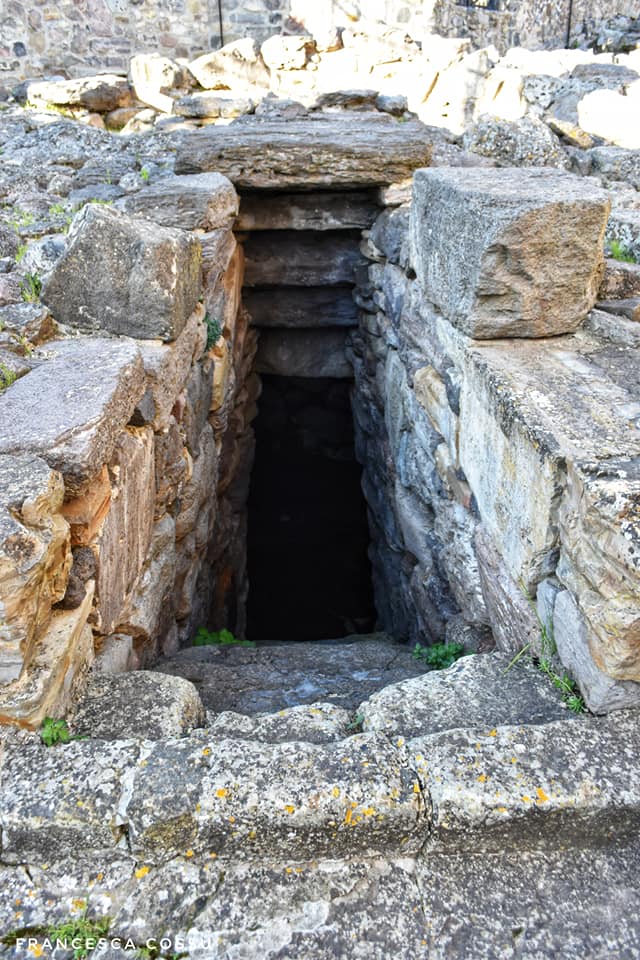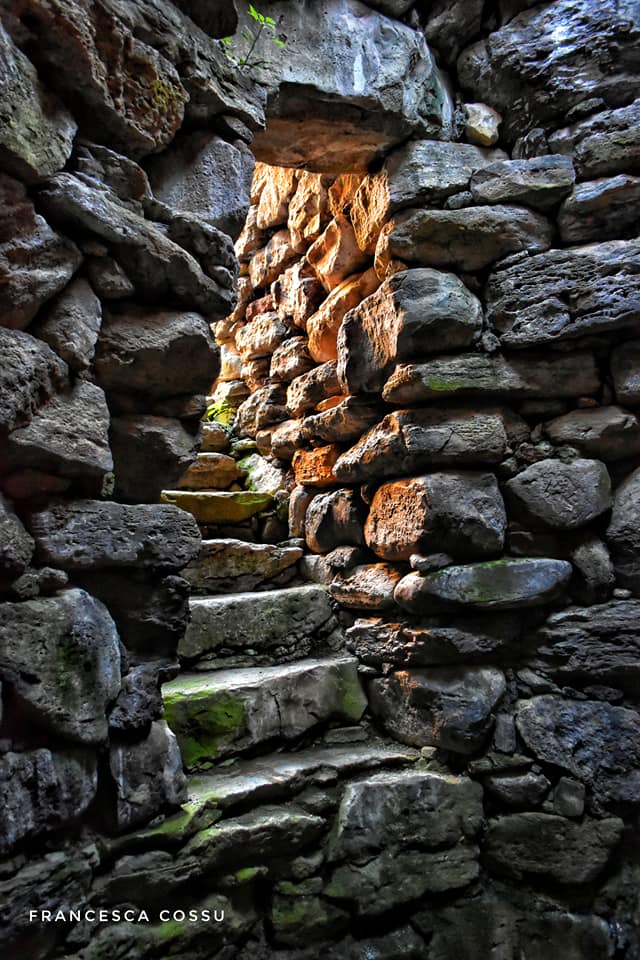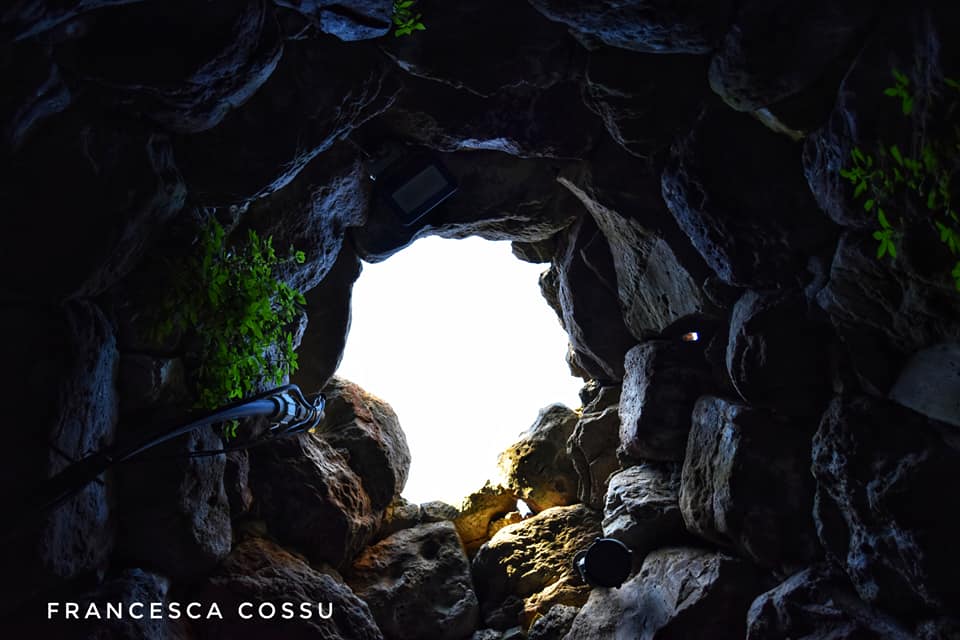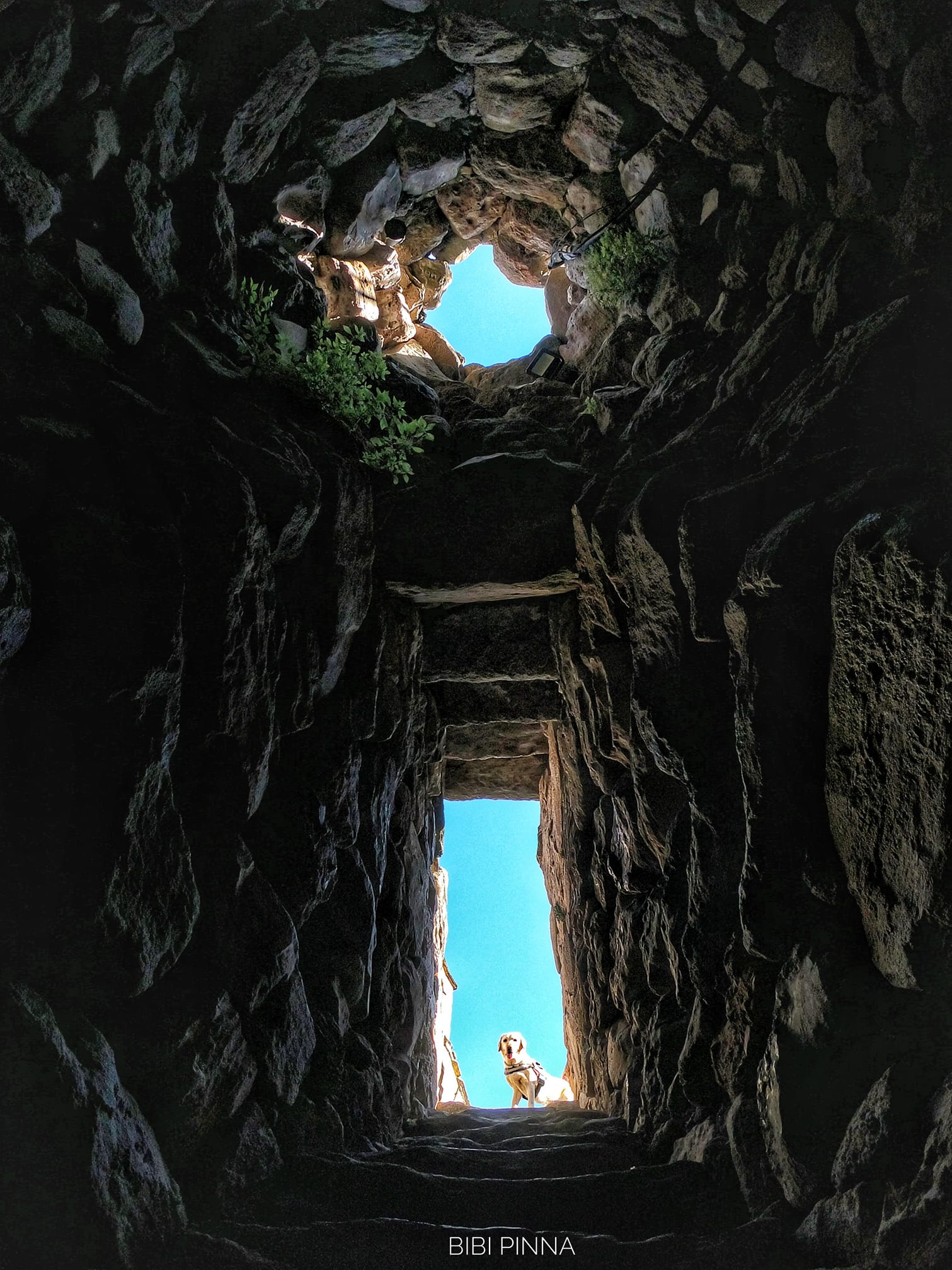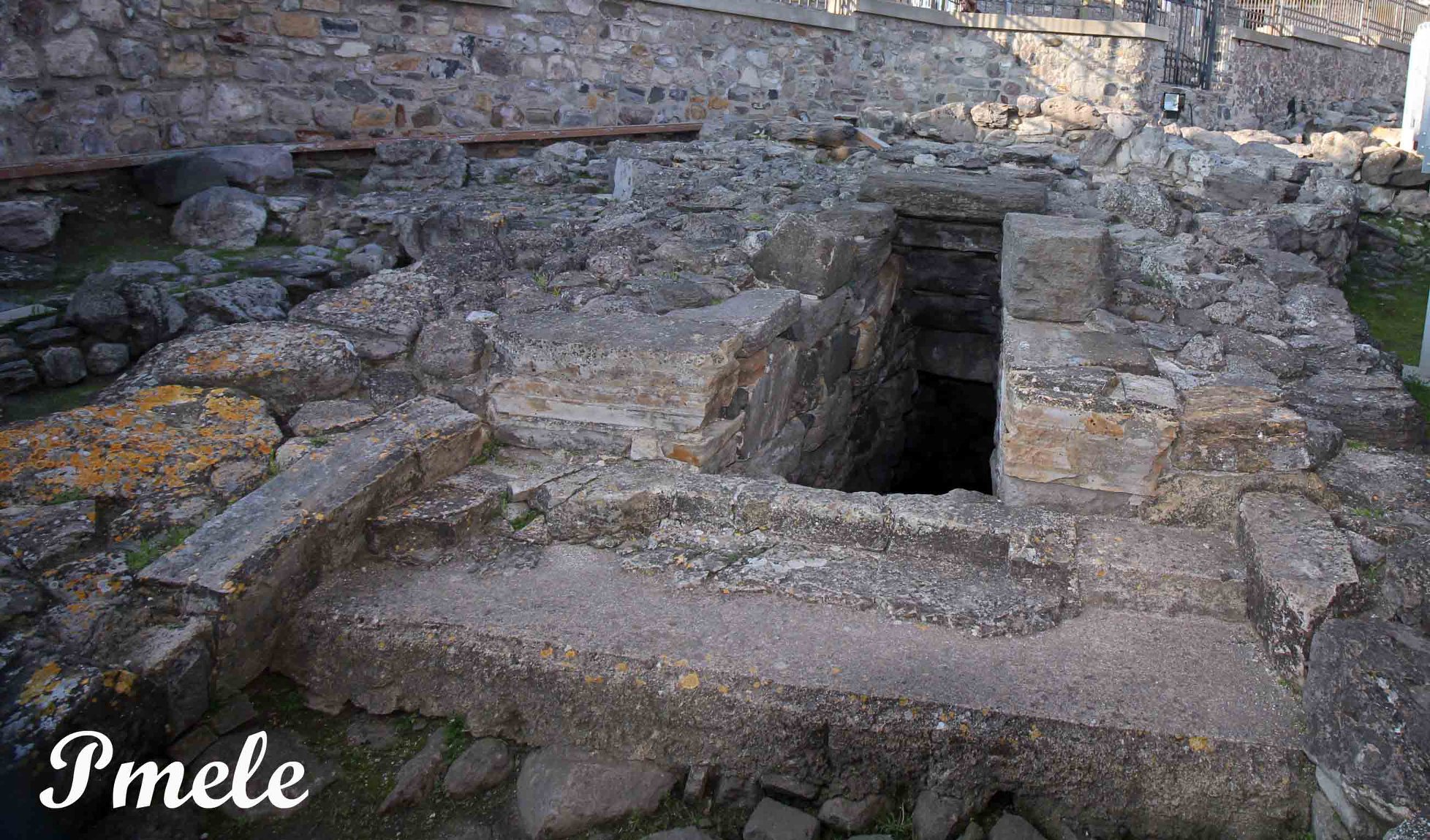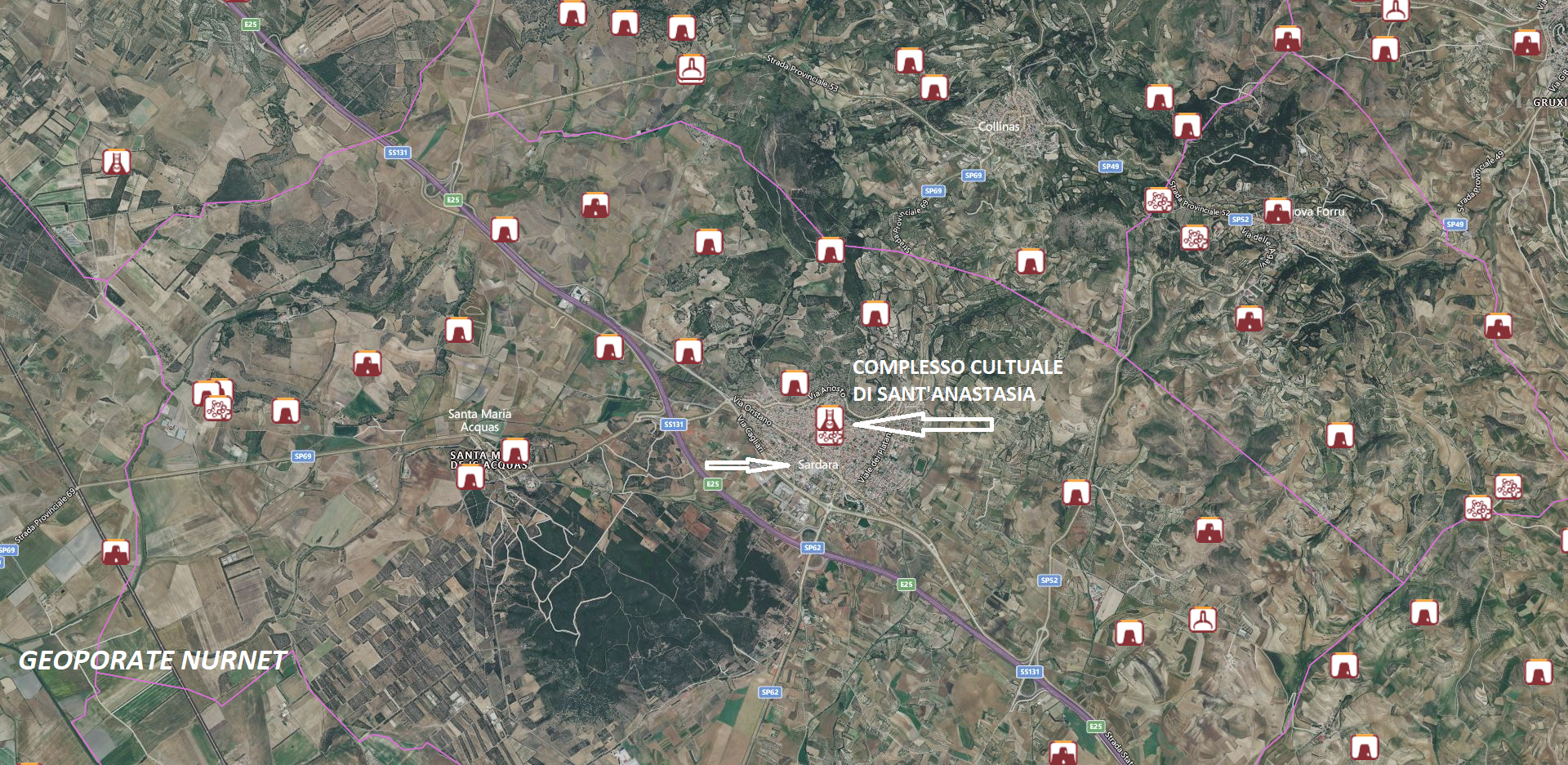26 – The cult complex of Sant’Anastasìa, in Sardara, is one of the 31 sites proposed to Unesco as flag bearers of the grandiose nuragic civilization, its history, and its vast material testimonies.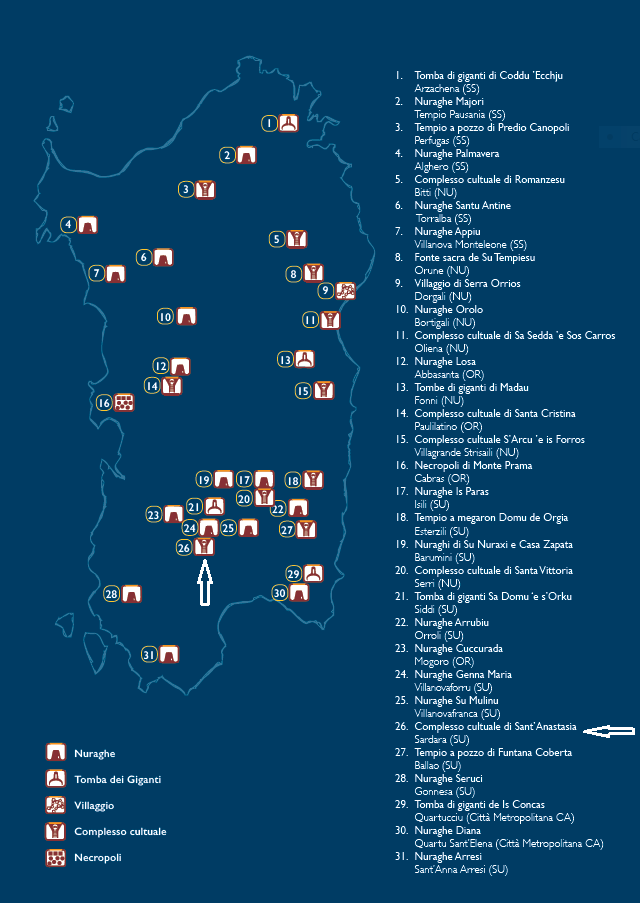 It rises in the upper part ofSardaraand takes its name from the nearby church. The nuragic sanctuary of Sant’Anastasia is characterized by a sacred well calledfountain of the dolus(source of sorrows), from which the spring fed by underground aquifers emerges. Made of basalt and limestone blocks, possibly in the Late Bronze Age, it has a circular chamber with a false dome roof, accessed via a staircase protected by a corridor covered with slabs arranged flat.
It rises in the upper part ofSardaraand takes its name from the nearby church. The nuragic sanctuary of Sant’Anastasia is characterized by a sacred well calledfountain of the dolus(source of sorrows), from which the spring fed by underground aquifers emerges. Made of basalt and limestone blocks, possibly in the Late Bronze Age, it has a circular chamber with a false dome roof, accessed via a staircase protected by a corridor covered with slabs arranged flat.
The use of the area for religious purposes continued after the Nuragic age, as documented by a Punic pottery and remains of the Byzantine building beneath theChurch of Santa Anastasia(rebuilt in the 15th century). Inside the church, there is another nuragic well where numerous vases from the Iron Age (8th century BC) were found. The surrounding excavations have revealed a large curvilinear enclosure flanked by a walkway of stone slabs, within which there are several huts of a village that largely extends beneath the current houses of Sardara.
The photos of the cult complex of Sant’Anastasìa in Sardara are by Bibi Pinna. Nicola Castangia, Francesca Cossu, and Pietrino Mele.

